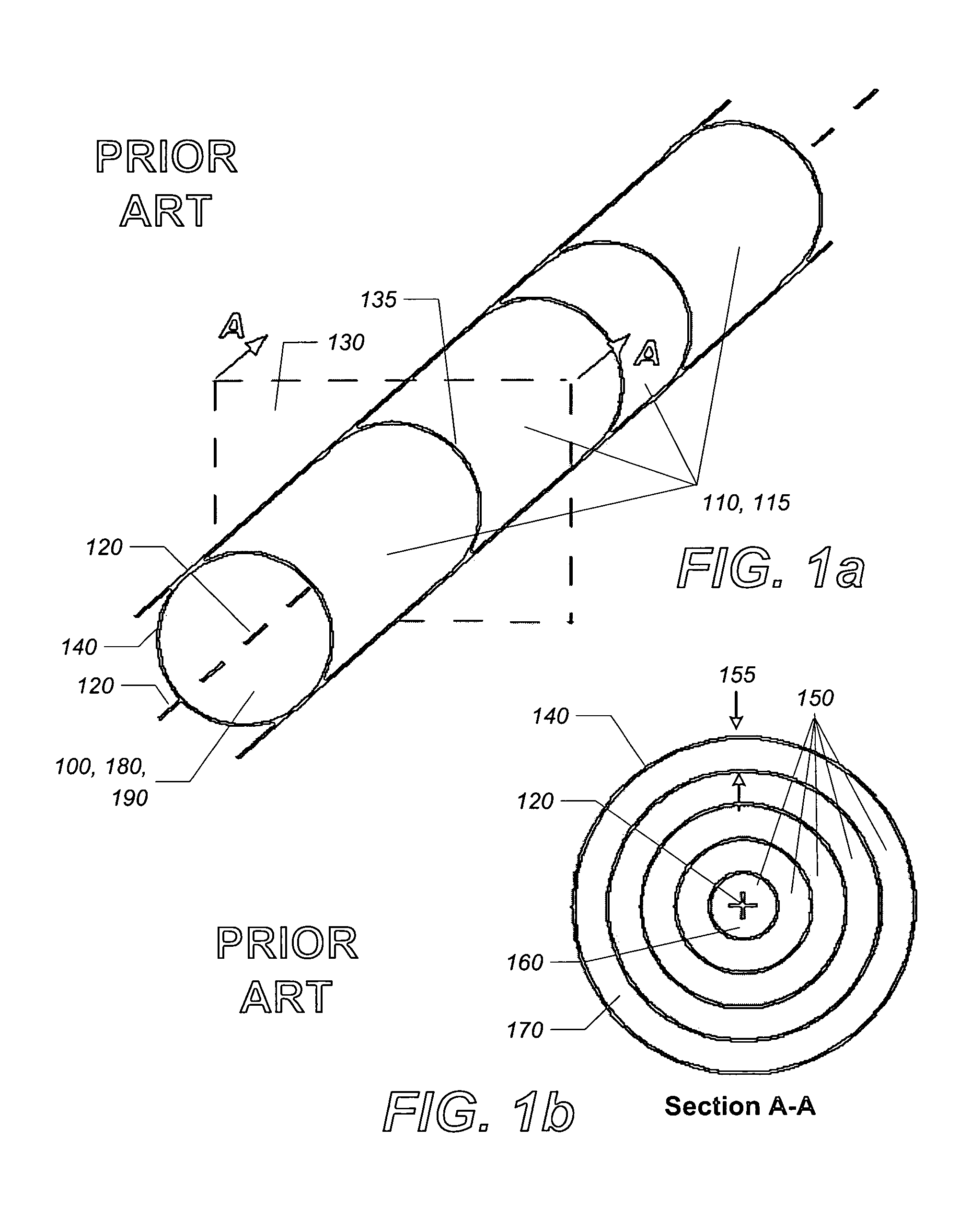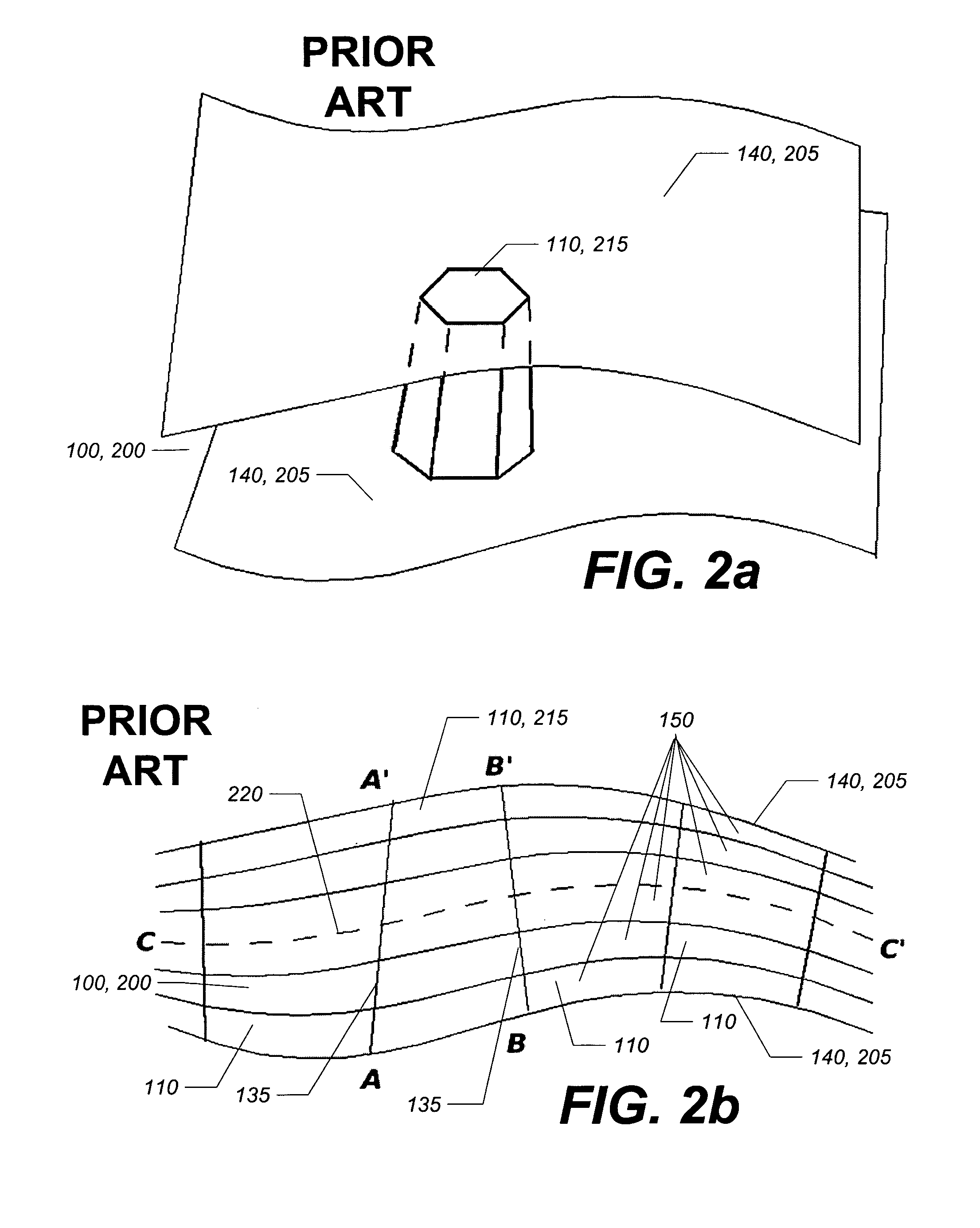Automated generation of lean models for injection molding simulation
a technology of injection molding simulation and automatic generation, applied in the field of computer simulation of fluid flow, can solve the problems of inability to accurately predict the flow of fluid, etc., to achieve the effect of simplifying the use of injection molding simulation software, improving robustness, and routinely and reliably using
- Summary
- Abstract
- Description
- Claims
- Application Information
AI Technical Summary
Benefits of technology
Problems solved by technology
Method used
Image
Examples
Embodiment Construction
Classical Hele-Shaw Geometries
[0054]FIG. 1a and FIG. 1b illustrate one of the two kinds of mold cavity 100 geometries that can be handled using the classical HS approximations, namely, a runner 190 shown here in the shape of a straight cylindrical cavity 180. The runner 190 is divided along its axis 120 into cells 110, specifically cylindrical cells 115. Any two adjacent cells 110 are joined at an interface 135. A cross-section 130 (FIG. 1b) shows that the cylindrical cells 115 are divided into layers 150, which are part of the discretization scheme of the model. Flow, in this case 1D flow along the axis 120 of the runner 190, will be generally parallel to the walls 140. In the i-th cell, each layer 150 has a characteristic layer thickness 155 hi,k, where k is the layer 150 index, increasing inward from 1 in the layer closest to the wall. The layer thickness 155 of the innermost layer 160 is defined as the distance from the axis 120 to the boundary with the next layer 150. The exemp...
PUM
| Property | Measurement | Unit |
|---|---|---|
| shape | aaaaa | aaaaa |
| contact area | aaaaa | aaaaa |
| volume | aaaaa | aaaaa |
Abstract
Description
Claims
Application Information
 Login to View More
Login to View More - R&D
- Intellectual Property
- Life Sciences
- Materials
- Tech Scout
- Unparalleled Data Quality
- Higher Quality Content
- 60% Fewer Hallucinations
Browse by: Latest US Patents, China's latest patents, Technical Efficacy Thesaurus, Application Domain, Technology Topic, Popular Technical Reports.
© 2025 PatSnap. All rights reserved.Legal|Privacy policy|Modern Slavery Act Transparency Statement|Sitemap|About US| Contact US: help@patsnap.com



